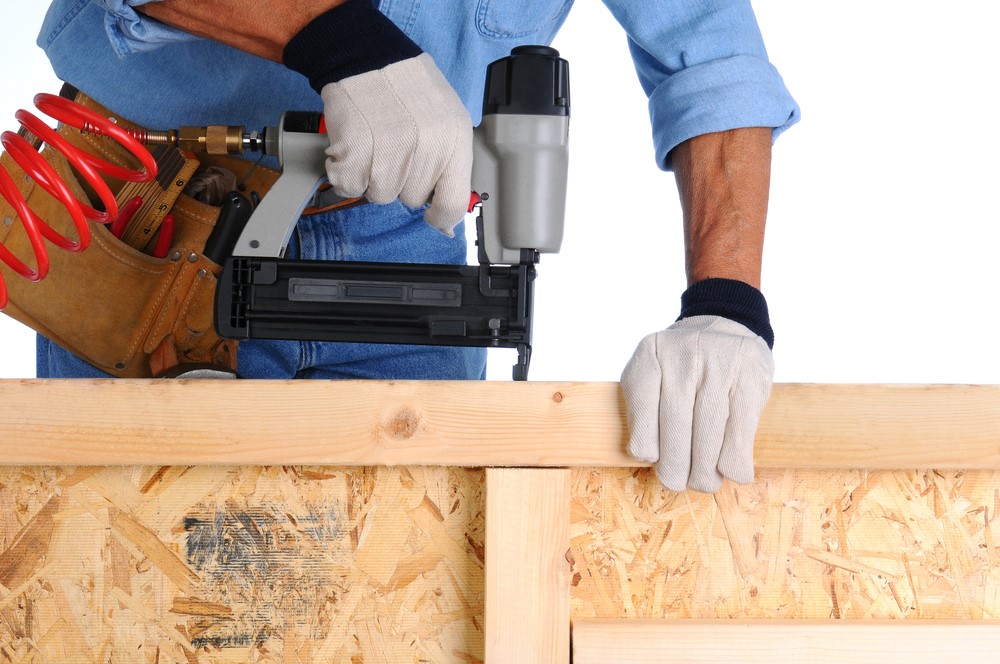(guest post by Steve Wilson)
These days, the default 16-oz. claw hammer spends more time coaxing things into place than it does driving nails into wood. It’s been downsized by an army of pneumatic nailers that are designed for everything from driving common nails to highly specialized jobs like stapling shipping cartons in mail-order operations around the world. When these air tools first started showing up on building sites, they seemed like the natural outgrowth of the air-driven tools used in automotive shops ever since cars had inflatable tires.
The reason pneumatic nailers are so popular is because they make many jobs much easier while almost always achieving better results. A simple visual explains why: Say you are trying to nail a horizontal piece of trim on a wall. You hold the trim board in place with one hand and your hammer with your other hand. Then you try to figure out which hand is going to hold the nail. If you had a pneumatic nailer, you wouldn’t need the third hand that you never have.
There’s also an added bonus: By adjusting the air pressure on the tool, you can regulate how far into the wood the nail will go. This means setting the nail head just below the surface and throwing away your nail sets.
The nailer choices available to contractors are vast, but the fasteners these tools drive dwarf the tools that drive them. The Quick Reference Chart below will give you a good idea of the broad range of fasteners that are available and what jobs they can handle. Most contractors will probably use only a handful of different nailers, but these tools are such time-savers that in many cases a single job will justify buying another.
Quick Reference Chart for Pneumatic Fasteners
Don’t Throw Away Your Hammer Yet
You can’t simply buy a nailer, throw your hammer away and suddenly have lots of free time. It’s best to keep your hammer and buy a nailer, as well as a small compressor, at least 50 feet of 1/4 -in-diameter air hose, the fasteners that fit the nailer and the job you want to do and a little can of light oil to keep everything working smoothly. Keep the hammer on board for smaller, more delicate jobs.
It sounds like a lot, but when you see how much easier these tools make your work, you’ll be happy. You might also consider investing in one of the newer cordless nailers that are powered by different fuel cartridges: NiCad batteries, compressed propane and compressed nitrogen. None of these are tethered to an air hose and compressor or an electrical cord and receptacle, making them easy to carry and use.
Steve Willson began his career as a carpentry contractor in Rochester, New York, where he owned and operated his own business. He then joined Popular Mechanics magazine as their Home Improvement Editor, a position he held for 22 years. During that time, he produced thousands of pages of home improvement and shop work content, including a Woodworking Guide that received a National Magazine Award. He is also the author of three books. He now writes about home improvement, nailers and other tools for The Home Depot.





